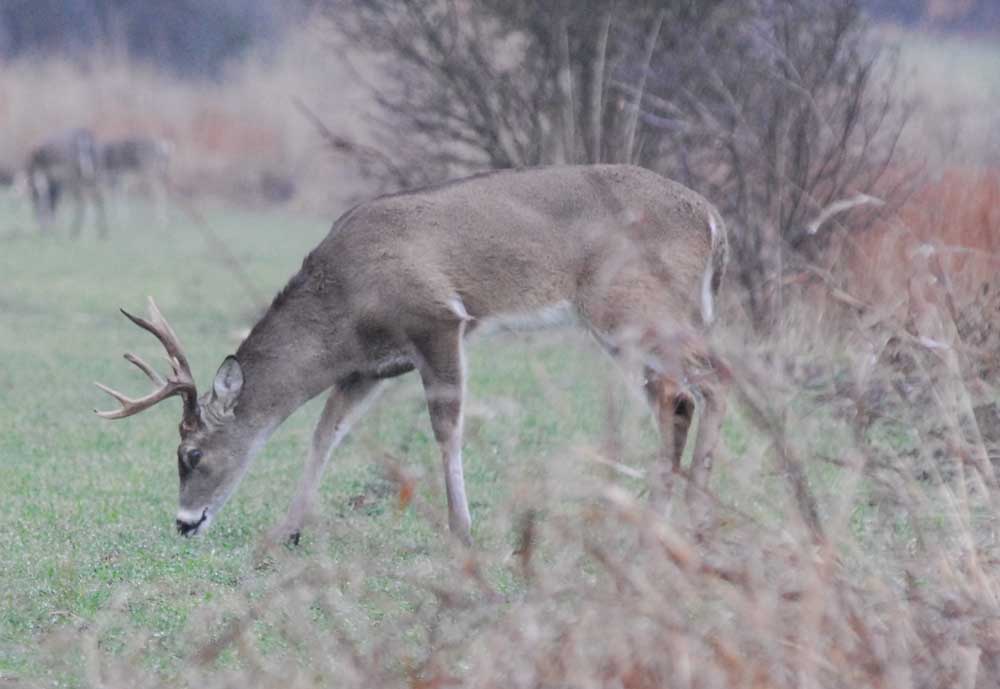Repetition is an important element in good landscape design
Published 11:57 am Thursday, April 13, 2017

- Greg Grant
Landscape design is not accepting what you see, but creating what you want to see instead.
Most landscape experts command longer lists of basic design principles. However, I don’t consider myself an expert. I am, and will always be, a dedicated student of landscape design. And as a student, I like shorter lists that are easier to remember. My short list of basic design principles is made up of balance, unity, repetition, dominance and scale. I’m fully convinced that no artistically pleasing landscape can be created without using each of them. I boiled the lists down to five so that I could remember them on one hand. And I remember them in that order so that its acronym reminds me that all landscapes need BURDS in them. OK, it’s hokey, but it works.
Trending
I could start with any of the five, but I’m going to begin with the one I consider the most important of all; repetition. If you can only remember one, this is it. It’s the one most gardeners and plant collectors fight the most; however, it’s the one most likely to make you appear to know what you are doing.
So, fight the urge and repeat after me:
“I WILL use the same lines, shapes, colors, plants and materials throughout the landscape.”
You have to, or the landscape won’t visually hold together.
Let’s look at two analogies that might help a bit. First, design is design. It doesn’t matter if it’s interior design, floral design or fashion design. The principles are just the same. Most folks do a pretty fair job with interior design, and most folks do an acceptable job of dressing themselves in the morning without getting laughed at. That’s because they are aware of matching furniture, frames, colors, jewelry, sweaters, socks, etc. But unfortunately, these same people tend to scatter one of everything in the landscape and not realize they should have used the exact same thought processes.
Look inside a home or business and note the repeating shapes and lines in the floor and ceiling tiles, the door and window shapes, the furniture types, the trim and wall colors, the room shapes, the curtain colors and materials, etc. These all artistically hold the vision together to accommodate the addition of more eye-catching items.
Trending
I have a collection of heirloom family quilts. These amazing pieces of folk art were fashioned from bits and pieces of materials, mostly saved from making clothes. Think of these bits and pieces of colored cloth as plants and yard art in the landscape. The image created would be way too chaotic and busy on the eye if it wasn’t for the repeated patterns the quilter used putting them together, along with the same border and backing. The final glue that holds them together is the exact same quilted stitch running throughout them. These recurrent patterns might be likened to the rhythm or pulse created by repeating elements in your landscape design.
Being repetitive in landscaping isn’t all that hard. It’s all about having a plan and sticking with it. Repetition can be accomplished by using similar bed shapes, by maintaining the same edging, by sticking with the same type and color of pots, by repeating similar pruned and natural plant shapes and by using the same colors over again. These are known as “color echoes” and help hold the landscape together as a whole, instead of a bunch of parts. The colors don’t always have to be exact, as even related colors share a common bond. Naturally, green serves this purpose very well, but can still use help from the showier colors.
I suggest keeping your bed edging simple and the same throughout the landscape, just as a frame remains the same around a painting. We all know in a long-term landscape project it’s easy to start a different border based on the materials or cash on hand. Resist this urge and repeat what you’ve already used. My general rule of thumb on hardscaping is no more than three different kinds of materials. The background is way too busy when there’s a dizzying combination of concrete, asphalt, brick, stone, wood, metal and plastic. Any time you place something new in your landscape, ponder the thought, “Am I repeating a material, color or shape I already have?” Repetition is a good thing. Our natural tendency is just the opposite.
My own old-fashioned landscape in the country is far from your typical suburban one, but the design principles I work with are the same, nonetheless. I repeat the rectilinear shapes established by my old dogtrot house in my plantings. I use the same fencing material with the same kind of posts throughout. My barns and outbuildings are painted the same color as are my house and other similar features. I used 13 (one side is longer than the other) of the exact same lilac-purple crapemyrtles in an allée leading to my house, and 6,000 of the same loblolly pines as a green “curtain” behind the house. I limit my color palette to a portion of the color wheel containing assorted pinks, whites, blues, maroons and purples, and repeat those as well. I have galvanized fire rings full of potting soil in my little back garden that I use as raised beds for vegetables. The galvanized metal matches that of my house, barn, hen house and corn crib. And my brick paths to the front and back porches make use of the very same antique bricks my chimney is made of.
Naturally as a plant lover, there’s plenty of diversity and show. But without some repetition, any landscape would be too carnival-like – too busy on the eye. The goal of a fine landscape is to provide pleasing visual stimulation without tiring the mind and eye. It’s generally also about fitting in, not leaping out and forcing as issue. One final word of advice when it comes to repetition – better too much than too little. Some of the most beautiful landscapes in the world – both manmade and natural – are very simple and rhythmic. Just remember that repetition is the common thread.
Greg Grant is the Smith County horticulturist for the Texas A&M AgriLife Extension Service. You can follow him on Facebook at Greg Grant Gardens, read his “Greg’s Ramblings” blog at arborgate.com or read his “In Greg’s Garden” in each issue of Texas Gardener magazine (texasgardener.com). For more information on local educational programming, go to smith.agrilife.org.






